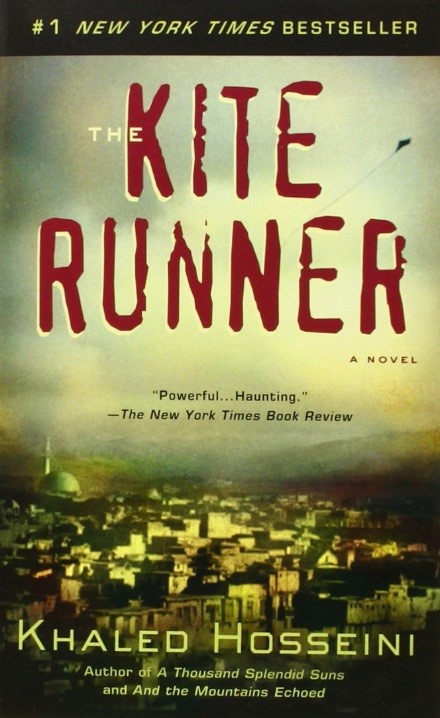
The Kite Runner is drastically different from the average teen novel. To begin with, the plot unfolds in war zone Afghanistan, a far cry from the typical American setting. While the events found within the book are rather inconceivable to the average reader, the story’s powerful narrative and shocking twists make it a must read for anyone.
As mentioned above, The Kite Runner takes place in an area filled with violence and war. Consequently, the novel is full of graphic and unpleasant scenes, which may be difficult to stomach for some. Once the book starts two main characters are quickly introduced - Amir and Hassan. Despite being close friends, the two come from polar opposite backgrounds. Amir’s father, called “Baba”, is a wealthy man who is in charge of his two servants, which are Hassan and his father, Ali. Hassan and Ali are Hazaras, a minority group in the area. With no forecast of the future trials, the book begins with a more lighthearted experience. A common hobby for children was kite fighting, where competitors would clash kites together with the goal of being the last standing. In a tournament, Amir is victorious. The tradition of running after the final loser’s kite is carried out by Hassan. At this point, a heinous and appalling travesty occurs. As Amir goes to track down his companion, he discovers Hassan in an alleyway, being brutally attacked and raped by three boys, led by a main antagonist, Assef. This event changes everything. The boys drift apart, and eventually Hassan and Ali move out. As war wages on in Afghanistan, the story flashes forwards to Amir having escaped to California as a refugee.
The plot settles down for a time. During this period, less graphic scenes such as Amir getting married and Baba passing occur. At some point, an old family friend from Afghanistan, Rahim Kahn, calls from his deathbed asking for a visit. When Amir follows through on his friend’s dying wish, the climax hits. Kahn reveals seemingly endless series of shocking news to Amir, including that Hassan has died. Hosseini leaves readers completely stunned with further information of both the past and present in Afghanistan. The news starts a whole new story based around Amir’s search for redemption- to save Hassan’s newly revealed son from the terrorism and death surrounding the young child. This journey leads readers through an attempted suicide, the return of Assef, and a new kite fighting experience. These moments, in addition to a beautiful, reflective ending, are best left to be heard firsthand through Hosseini’s powerful writing.
One of the key underlying themes in the book is the social class system. As close as Amir and Hassan might have personally been in the beginning, they were always separate. Hassan’s lower ethnic background and inferior wage class made him a second class citizen, proven by the constant discrimination and opposition he faces, even as a young child. This is an issue that is prevalent in all places and all societies, not just distant areas such as Afghanistan.
I personally rate the book as a 9/10. The hunt for redemption, the fluid and meaningful words, and the repeating motifs blend together to successfully transform the violent plot into a both intriguing and impactful read. However, it loses the one point as the more violent scenes may be unpleasant to some, which in turn might make the book difficult to get through. Only by reading the book is one able to fully appreciate the heart wrenching story, the symbol of the kite, or the beauty and meaning behind the words,
“ For you, a thousand times over.”
Check out The Kite Runner at the Newport Beach Public Library.